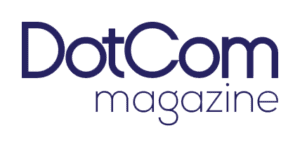PR software is a broad category of tools designed to streamline and enhance various aspects of public relations (PR) activities. These tools are essential for modern PR professionals, offering a range of functionalities that support tasks such as media monitoring, press release distribution, campaign management, and analytics. As the field of PR continues to evolve, the role of PR software has become increasingly pivotal in helping organizations manage their communications effectively, track their brand’s reputation, and engage with their audience in a more strategic and data-driven manner.
The advent of PR software has revolutionized the way public relations are managed. In the past, PR professionals relied heavily on manual processes and traditional methods for media outreach, monitoring, and reporting. However, with the rise of PR software, many of these tasks can now be automated and optimized, leading to significant improvements in efficiency and effectiveness. PR software provides a comprehensive suite of tools that help PR teams execute their strategies more efficiently, measure their impact, and make data-driven decisions. By integrating various functionalities into a single platform, PR software enables professionals to manage their activities with greater precision and coordination.
One of the core functions of PR software is media monitoring. This feature allows PR professionals to track and analyze media coverage of their brand, industry, and competitors. Media monitoring tools can scan news articles, social media posts, blogs, and other online content to provide insights into public perception and media sentiment. This real-time monitoring is crucial for identifying trends, managing potential crises, and understanding how a brand is represented in the media. Advanced media monitoring tools also offer sentiment analysis, allowing users to gauge the tone of coverage and identify areas for improvement or further engagement.
Another key functionality of PR software is press release distribution. Effective distribution of press releases is essential for reaching the right media outlets and ensuring that important news reaches the target audience. PR software platforms often include distribution networks that can automatically send press releases to a curated list of journalists, bloggers, and media contacts. These platforms can also track the performance of press releases, providing metrics on open rates, click-through rates, and media pickups. By streamlining the distribution process and offering analytics, PR software helps organizations maximize the impact of their press releases and improve their media outreach efforts.
Campaign management is another critical area supported by PR software. PR campaigns often involve multiple activities and touchpoints, including media relations, event planning, content creation, and stakeholder engagement. PR software helps manage these complex campaigns by providing tools for planning, tracking, and coordinating various activities. Features such as task management, project timelines, and collaboration tools enable PR teams to stay organized and ensure that all aspects of the campaign are executed smoothly. Additionally, PR software can integrate with other marketing and communications tools, allowing for a more cohesive approach to campaign management and ensuring alignment across different channels and teams.
Analytics and reporting are essential components of PR software, providing valuable insights into the performance and effectiveness of PR activities. These tools can generate detailed reports on media coverage, audience engagement, and campaign outcomes, helping PR professionals evaluate their strategies and make data-driven decisions. Metrics such as media impressions, share of voice, and sentiment analysis offer a comprehensive view of how PR efforts are impacting the brand’s reputation and visibility. By leveraging these insights, organizations can refine their PR strategies, optimize their tactics, and demonstrate the value of their PR activities to stakeholders.
PR software also plays a significant role in stakeholder management. Effective communication with stakeholders, including journalists, influencers, and industry experts, is crucial for building and maintaining relationships. PR software platforms often include features for managing contact lists, tracking interactions, and segmenting audiences. These tools enable PR professionals to personalize their outreach efforts, monitor engagement, and nurture relationships over time. By maintaining a well-organized database of stakeholders and tracking interactions, PR software helps ensure that communications are targeted and relevant, enhancing the overall effectiveness of PR efforts.
Crisis management is another area where PR software can provide substantial benefits. During a crisis, timely and accurate communication is essential for managing the situation and protecting the brand’s reputation. PR software can assist with crisis management by providing real-time media monitoring, automated alerts, and crisis communication templates. These tools enable PR teams to respond quickly to emerging issues, track media coverage, and coordinate their messaging effectively. By facilitating rapid response and providing critical insights, PR software helps organizations navigate crises and maintain control over their communications.
In addition to these core functionalities, PR software often includes features for content creation and distribution. Content management tools enable PR professionals to create, edit, and publish content such as press releases, blog posts, and social media updates. These tools can also include content scheduling and automation features, allowing for efficient and timely publication of materials. By streamlining the content creation process and automating distribution, PR software helps ensure that messages are delivered consistently and effectively across various channels.
The future of PR software is likely to be shaped by ongoing advancements in technology and changes in the PR landscape. Emerging technologies such as artificial intelligence (AI), machine learning, and natural language processing are expected to enhance the capabilities of PR software. For example, AI-powered tools may offer advanced sentiment analysis, automated content generation, and predictive analytics. As the field of PR continues to evolve, staying abreast of technological advancements and adapting to new tools and solutions will be essential for PR professionals seeking to maintain a competitive edge and drive success in their communications efforts.
Training and support are also crucial aspects of leveraging PR software effectively. Organizations must invest in training programs to ensure that their PR teams are proficient in using the software and can fully utilize its features. Comprehensive training and support help maximize the value of PR software, enabling professionals to achieve their goals and deliver impactful results. By providing ongoing education and resources, organizations can empower their PR teams to make the most of their software investments and drive continued success in their communications strategies.
In conclusion, PR software is a vital tool for modern public relations, offering a range of functionalities that support media monitoring, press release distribution, campaign management, analytics, and stakeholder engagement. By integrating various features into a single platform, PR software helps PR professionals manage their activities more efficiently and make data-driven decisions. As technology continues to advance, PR software will likely evolve to offer even more sophisticated capabilities, enhancing its role in the PR landscape. Effective training and support are essential for maximizing the benefits of PR software, ensuring that organizations can achieve their communications goals and maintain a strong and impactful presence in the market.




























